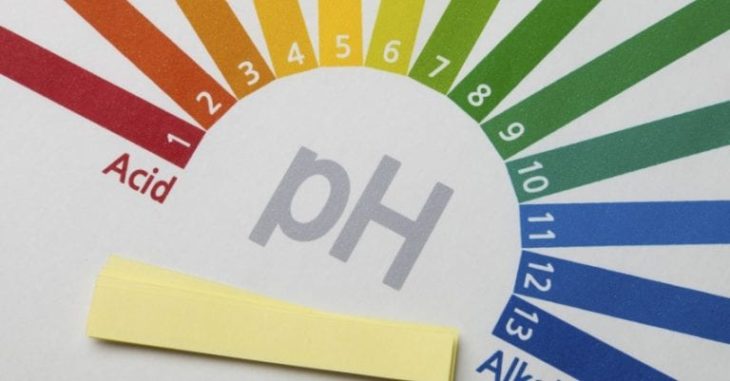Yeast infections can be recurring and getting them once makes one susceptible to repeated infections of similar nature. However, some of these in our body can be the reason for discomfort and irritations known as yeast infections.
One such yeast that could lead to infections in the human body is called Candida. This fungus or yeast resides in the vaginal area in small numbers. They are naturally occurring and are controlled by lactobacillus bacteria. The infection from this yeast is called as candidiasis and generally occurs due to certain body imbalances wherein the yeast multiplies uncontrollably.
To be diagnosed with a yeast infection is not unusual and most women experience symptoms of this infection at some point in their life. The primary issues associated with yeast infections include inflammation, severe itching, and burning sensation. Although there are chances of acquiring a yeast infection through sexual contact with the affected; it is not considered to be a sexually transmitted disease.
The good news is that yeast infections can be easily treated and are not really a cause for concern. However timely checkup and treatment can help one sort out the infection at the earliest and get relief from its symptoms.

Source: The Candida Diet
Contents
What causes yeast infection?
The main cause of yeast infection is associated with the overgrowth of fungus candida. Normally in the vagina, both the yeast Candida and bacteria lactobacillus coexist. The lactobacillus bacteria control the overgrowth of this yeast by producing an acid.
When this balance of the yeast and bacteria gets disturbed, there is an overproduction of yeast that results in yeast infection.
Some of the primary reasons that this balance is disturbed can be attributed to the below reasons:
- Use of certain antibiotics that can affect the lactobacillus bacteria in the vagina thereby affecting the ph balance in the vaginal area.
- Pregnancy causes the body to go through a number of changes. Hormonal changes that occur in the body can often be the reason for the decrease in lactobacillus bacteria which can in turn result into yeast overproduction.
- If you have diabetes and are not controlling the disease; then you can be at high risk of a yeast infection. The women suffering from type 2 diabetes are at an increased risk of catching a yeast infection as long-term diabetes impacts the body’s ability to fight infections both fungal and bacterial. In such cases, once the yeast infection manifests in the body, getting rid of the same becomes challenging.
- Persons with an impaired immune system or a weakened immune system are very prone to yeast infections getting the better of them. Diseases like HIV that make the immunity levels very low can often be the underlying cause of recurring yeast infections.
- Treatments that increase estrogen levels such as taking oral contraceptives or hormonal injections can lead to yeast infections due to the changes they make to the body’s hormonal levels.
- Although yeast infection does not come under the classification of sexually transmitted diseases, in a number of cases it was reported that it was transmitted after sexual activity. Of course, that does not mean that women who do not have active sex life cannot contract yeast infections.

Source: Kris Carr
How can you recognize a yeast infection?
Yeast infections can be severe or mild and depending upon the intensity of the infection the symptoms can be seen. In most cases of a yeast infection, you may notice the following symptoms such as:
- Intense irritation and itching sensation around the vaginal opening, i.e., vulva
- A burning sensation may be noticed either while urinating or during a sexual intercourse
- The vulva region of the vagina may seem red, or there may be slight inflammation
- There could be noticeable pain or soreness in the vaginal area
- Rashes around the vagina region
- White vaginal discharge that could seem thicker than usual
In case of a severe yeast infection, the following symptoms can be observed:
- The redness and swelling around the vaginal area intensifies
- Recurring yeast infections; generally numbering to around 4 infections a year
- If a bacteria other than candida also gets involved in causing the infection.
Complicated or severe yeast infections generally occur in women who are pregnant or with low immunity levels or who are suffering from uncontrolled diabetes.
What are the tests to confirm a yeast infection?
The first step to any treatment is to conduct the tests and diagnosis to confirm the disease, its root because and if it belongs to any specific class of disease.
Similarly to diagnose a yeast infection, the doctor will be required to perform a set of diagnosis to arrive at a conclusion and begin the treatment. Here is the normal course of diagnosis to confirm yeast infections:
- The first step in the diagnosis would involve the medical practitioner asking you questions with regards to your medical history. This is important to understand if you are undergoing any medical conditions like pregnancy, diabetes or any other that could impact the diagnosis or the course of treatment. Here you also should inform the doctor if you are acquiring this infection for the first time or whether you have had previous episodes of yeast infections or any other sexually transmitted diseases.
- Next step in the diagnosis involves conducting a physical examination which mainly is concentrated around the genital areas. The doctor checks for the physical symptoms of the infection such as redness, swelling and so on. Furthermore, an instrument called speculum is inserted in the vagina that opens the vaginal wall so that the doctor can examine the vagina and cervix clearly.
- Additionally, there are samples of vaginal secretions such as the vaginal fluid that is tested for the underlying cause of the infection and identifying the yeast involved in causing the infection.

Source: Healthline
Treating vaginal infections: Treating vaginal infections can be a twofold approach. One through medications and the second through home remedies. It is important to note that severe or recurring yeast infections should only be treated through medications.
Medications for mild yeast infections:
Anti fungal medications: These are generally for the shorter duration. Anti fungal medications such as butoconazole, clotrimazole, miconazole, and terconazole are commonly prescribed for treating yeast infections. These can be available in the form of suppositories, creams, and oral tablets. Most of these are available as OTC drugs, but a doctor’s prescribed medication is the best one to follow.
The primary side effects noticed with anti fungal medications include some burning and irritation. If you have been prescribed creams as a part of your medication, it is recommended to opt for other birth control measures since the oil from these creams can actually loosen the condom, increasing the chances of an unwanted pregnancy. If you have been recommended a duration course, it is best advised to complete the course so as to lessen the chances of a recurring infection.
Oral single dosage medication: In case the yeast infection is not very severe, the doctor may prescribe a onetime dosage of an oral anti fungal medication called flucanazole. Depending on the severity and the improvement, further doses along with complementary medications may be prescribed.
OTC Drugs: A number of OTC creams and vaginal suppositories are available that can help women with mild yeast infections. These are easily available lasting up to three or seven days and can even be used during pregnancy.

Source: Verywell Health
Treatment for severe yeast infections
The dose of medications: A longer course of azole medicines may be required to treat those with severe symptoms of a vaginal yeast infection. The course of medication generally lasts up to 14 days. The medicine may be administered in a cream, tablet or suppository format.
Multiple oral dosages: In some cases as the doctor may deem fit, two or three dosages of the oral medication fluconazole may be prescribed. In this form of medication, only oral dosages are possible, and no vaginal suppositories are available. A point to remember in multiple doses of medication is that sometimes it may not be suitable for pregnant women.
Alternative therapy:
In some cases where the symptoms do not seem very severe, alternative medicines may be found rather helpful. Although these have yet to be proven by science, a number of women have found relief in the symptoms by trying these remedies:
- Boric Acid: Boric acid can be used as a vaginal suppository to help in getting relief from severe yeast infections. This treatment involves the application of boric acid in and around the vaginal area twice daily for generally up to two weeks. There are however chances that boric acid could irritate your skin. It is important to remember that if consumed orally especially by children, boric acid could prove fatal.
- Yogurt: Yogurt is filled with good bacteria that can help the body fight a number of fungal and bacterial infections. Yeast infection symptoms can really be alleviated by either consuming yogurt orally or by applying it in the vaginal area. This, however, may take a little longer to treat infections as compared to normal medicines.

Source: Yogurt in Nutrition
Before trying any alternative therapy, it is extremely important to consult a doctor as alternative therapy though effective and without side effects, in the long run, can delay the entire healing process. Due to this, you may need to live with the symptoms longer. Also, since alternative medicine is not backed by any scientific backing, you can never be sure about their efficacy.
